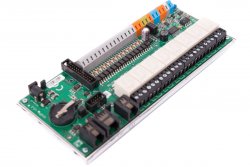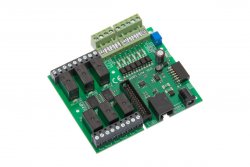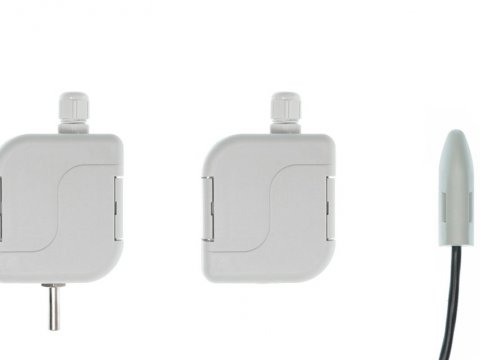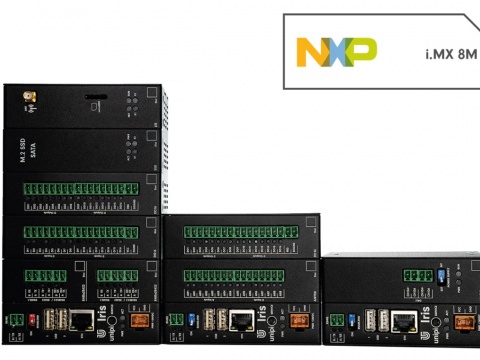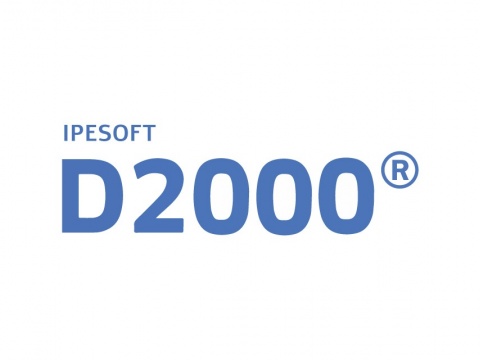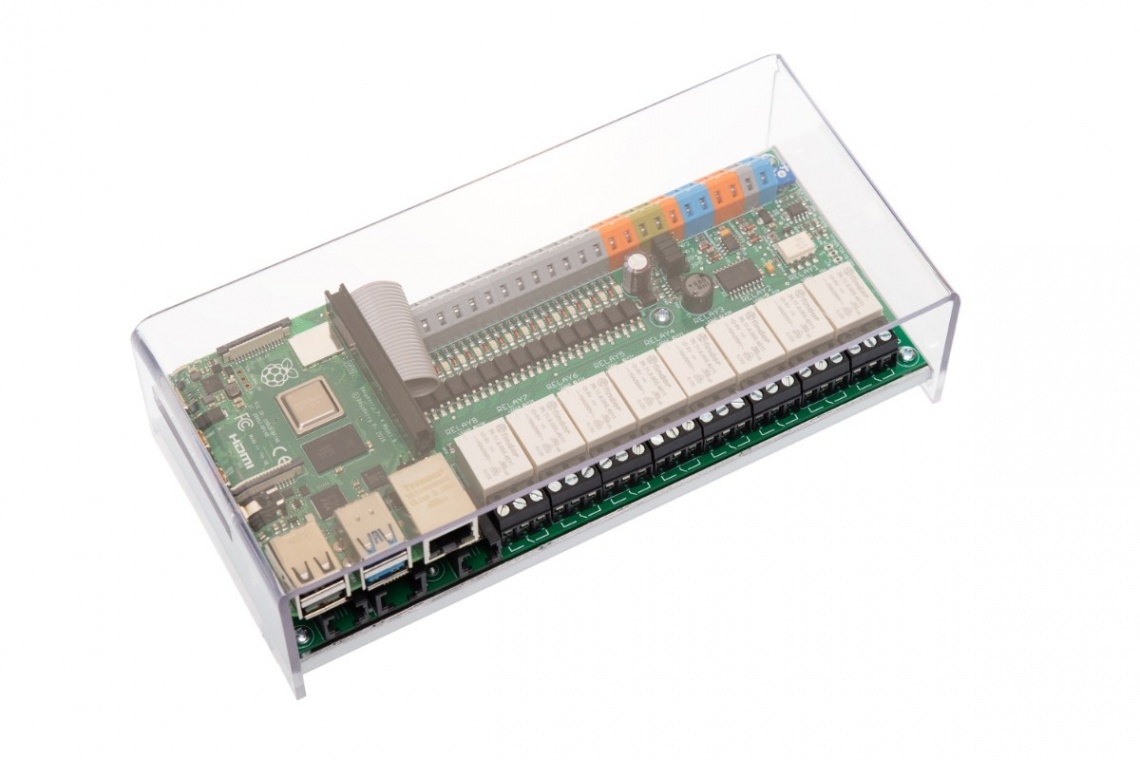
The Unipi 1.1 and 1.1 Lite are a simple and inexpensive expansion boards for the Raspberry Pi computer, allowing it to function as a programmable logic controller (PLC). It is also the direct predecessor of the Unipi Neuron product line.
Unipi 1.1
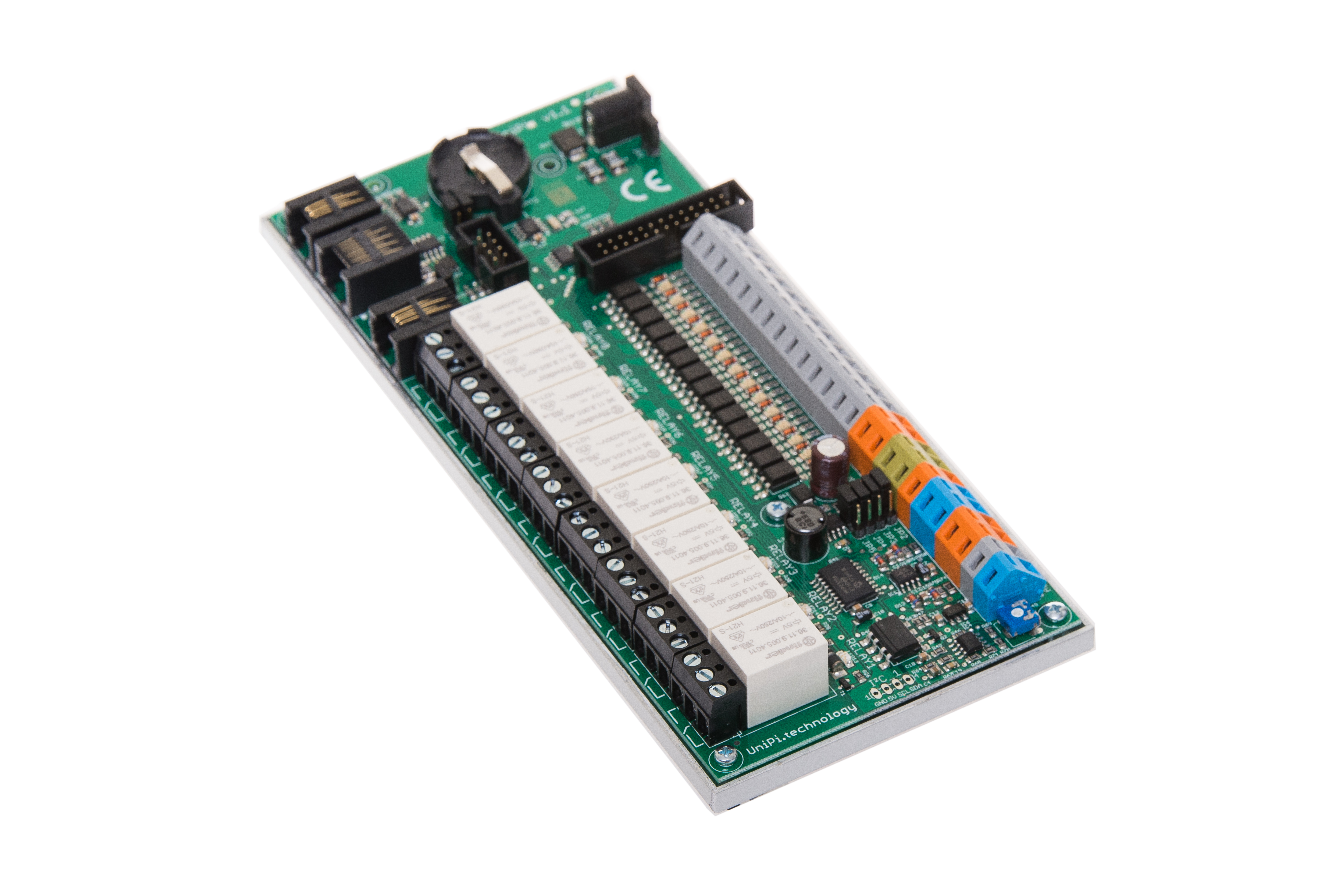
Unipi 1.1 is an extension board for the Raspberry Pi minicomputer, allowing it to function as a programmable logic controller (PLC). It is a simple and inexpensive controller suitable for use in Smart Home, BMS systems (Building management system), and for the development of innovation in the field of the Internet of Things. As an example may be building heating automation, automatic light switching, watering systems, garage and gate control, and other applications (read more in our references and Smart Home applications description). Unipi is an affordable control unit which can help you increase comfort and decrease operation costs.
Features
- 8 × changeover relays (250 V∿/10 A; 30 V⎓/10 A)
- 12+2* galvanically isolated digital inputs (triggered by 5–24 V⎓)
- 2 × 0–10 V analogue input
- 1 × 0–10 V analogue output
- 1 × 1-Wire port (suitable for connection of for example digital 1-Wire thermometers or other 1-Wire sensors)
- 1 × I2C port for extension
- 1 × Battery slot for RTC (Real Time Clock)
- 1 × UART port for external serial communications
*Digital inputs 13 and 14 are not accessible by default. To use them, please follow this manual.
Unipi 1.1 Lite

Unipi 1.1 Lite is a smaller and simpler variant of the Unipi 1.1, designed for the smallest automation projects. When compared to the Unipi 1.1, it features fewer I/O's but is more compact and cheaper.
Properties
- 6 × changeover relays rated 250 V∿/5 A or 24 V⎓/5 A
- 6 × galvanically isolated digital inputs triggered by 5–24 V⎓voltage with a minimum pulse length of 5 ms
- 1 × 1-Wire port for connection to 1-Wire thermometers and other sensors
- short circuit LED indicator
- compatible with Raspberry Pi 4 model B (all RAM variants), Raspberry Pi 3 model B+, Raspberry Pi 3 model B, and Raspberry Pi 2 model B
- connection with Raspberry Pi via a supplied ribbon cable
- possible to equip with DIN rail mounting and plastic cover
- requires an external 5 V 2.5 A power supply with a 2.1 mm DC jack
How it works

Raspberry Pi
Both Unipi 1.1 and Unipi 1.1 Lite use Raspberry Pi computers as their computing module. Both boards are compatible with the following Raspberry Pi models:
- Raspberry Pi 2 Model B
- Raspberry Pi 3 Model B
- Raspberry Pi 3 Model B+
- Raspberry Pi 4 Model B (all RAM variants)
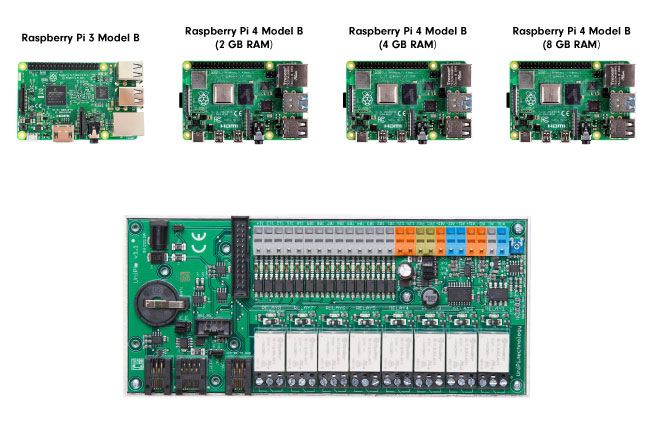
Control software is stored on an SD card used as the Raspberry Pi's memory storage. The Raspberry Pi then collects and processes all data from I/Os and communication interfaces either directly through GPIO or indirectly via I2C. Raspberry Pi also provides network connection through its onboard Ethernet port (10/100 Mbit or 1 Gbit depending on the RasPi model).
If you already own a compatible Raspberry Pi, you can purchase both the Unipi 1.1 and the Unipi 1.1 Lite as separate products. Otherwise, you can purchase either Unipi 1.1 starter set or Unipi 1.1/1.1 Lite complete set - in each of these options the Raspberry Pi is already included in the package.
I2C
Relay outputs are connected to the processor over I2C. Over it is possible to connect extension modules in case of need for additional inputs/outputs.
1-Wire
1-Wire channel allows connection of 1-Wire sensors and devices. Typically is suitable for the connection of digital thermometers, which are affordable and easy to install.
Inputs and outputs
Depending on the model, I/O groups can be equipped with digital, analogue, and/or relay modules, or a combination of all types. Each type has its own specific features and usage.
Digital inputs are designed for a reading of binary values (0/1, on/off, open/closed, etc.) and are thus suitable for connecting switches, motion sensors, window or door magnetic locks, etc.
Digital outputs can be used to control binary state devices, such as lightning switches, window shutters control, remote door control, etc.
Analogue inputs are used to receive either 0–10 V voltage or 0–20 mA current signals. Alternatively, they can be used for reading data from corresponding sensors, such as resistance thermometers. The user can adjust the input mode via corresponding control software.
Analogue outputs are used for the control of external devices such as three-way valves or heat exchangers via 0–10 V voltage or 0–20 mA current signals. Analogue outputs allow current or voltage regulation - alternatively, Group 1 inputs can be used in combination with resistance thermal sensors.
Relay outputs are designed for switching two-state devices via alternating or direct voltage. Relays thus can be used to switch boilers, water heaters, electric motors, or other stronger relays. Neuron unit relays are designed for 5 A maximum current and 250 V alternating/30 V direct voltage.
Software
Unipi v1.1 is compatible with a wide variety of software. For the Unipi 1.1/1.1 Lite we recommend either our open source driver EVOK or our advanced control software, Mervis. You may also be interested in an introduction to choosing software, where other compatible software platforms are mentioned.
